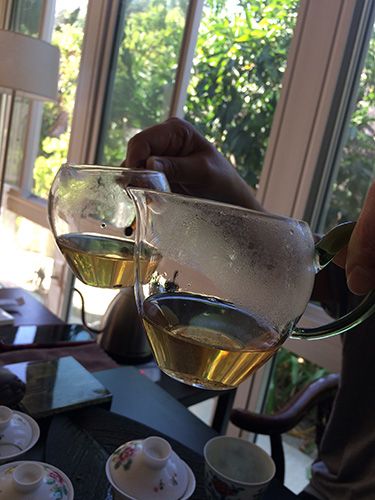
We officially registered our company in 1995 because we had just gotten stiffed on a job and had to take the poor dude to small claims court. The judge ordered the guy to pay half of what he owed us and told us to get real. The guy paid, and we signed up our new business on April Fool’s Day and called ourselves Biscuit Technologies.
We ended up (and still do) working with small artists, non-profits, huge ad agencies, media companies and sports organizations. We got lucky, as we had great timing with the rise of the internet, and many of our current clients have been with us since the beginning.
Over the years, what we do — designing things to be used on a computer (presentations, databases, websites, animations) has gotten blurred into the general world of “computer crap.” It’s not just one’s mom who expects you to keep track of her wireless password but lots of people think if you understand anything on a computer beyond selecting which social media channel to blast something to, then you must also be responsible for internal wiring, file access, slow speeds and hardware failures.
Where once the debate was over modifying our Flash animation of a roll of toilet paper dropping from the sky, cracking a concrete surface and disappearing—we programmed it so the toilet paper paused for a fraction of a second on the concrete before disappearing, but the client insisted physics didn’t apply and wanted us to remove that pause, we are now blamed for not setting up a backup on a WordPress site with a weak password which we had nothing to do with except handle the hosting.
One client we had built a database for had constant periods of the “dreaded coffee cup” image signifying low to shitty connectivity to their server or the internet. Some of their tasks involved duplicating quite a lot of records, so the dropped connections were causing all sorts of trouble. We asked the IT department if at least they could see which IP address was causing the bottleneck and they came back with the evidence that the owner’s son was playing video games during those coffee cup times. Due to circumstances beyond our control the client decided to scrap the entire project rather than tell the boss about his son.
Every once in awhile we get emails from people asking about oven technologies, or if we’re hiring bakers or cooks.
Last week we were contacted by an old client, a large and profitable institution that had hired us in 2002 to create a database in MS Access. For 19 years they had never brought us back to perform any updates, maintenance work or modifications so we figured they went on to bigger and better things (from MS Access there’s only “up.”*) They wrote to complain that their old database, while still working just fine, for some reason crashes an awful lot thereby decreasing their productivity and affecting their workflow so they would like us to come in and fix it. (Never mind there’s a pandemic going on).
Way back in 2002 when this large and profitable institution was contemplating hiring us our contact had been concerned his superiors would not feel comfortable doing so because of our silly name. We told him maybe his superiors could look at the names of our current clients instead, which at the time was Cisco, Adobe, and BBDO.
It might be assumed from their email that even though they are a large and profitable institution they don’t have a large, dedicated IT department to handle crashing and other network related issues. Not true. What’s going on is a little sad, because the IT department says it’s an unsupported platform and wants nothing to do with it, but they are required to respond on a regular basis to restore the file after a crash (which apparently is often). This is not fun for anyone, but really has nothing to do with the design of database.
*MS Access is pretty mediocre for many reasons, but back in 2002 I remember being able to control an object’s visibility on a form using conditional parameters. This means you can hide or unhide things depending on a user’s answers to questions. This feature was not available in Filemaker, what some people consider a leading desktop database application, until 2013. That’s kind of amazing.
Every once in awhile we receive checks payable to bisquit or bisqui, and our bank always cashes them, thankfully. Since we’ve added a dba for our tea company called 1001 Plateaus no one expects either of those to be spelled correctly.























































































